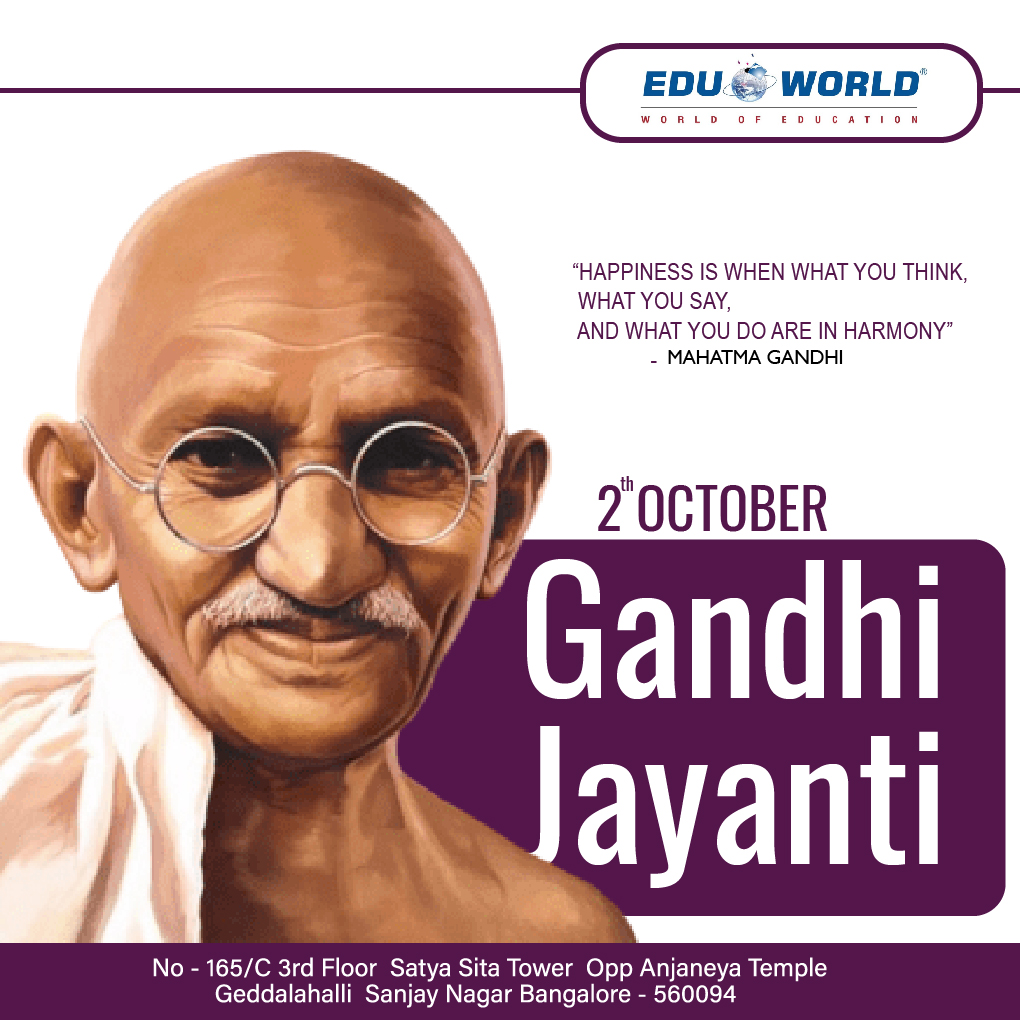The 153rd birthday of Mahatma Gandhi, the Father of the Nation, was on October 2, 2022.The Ministry of Jal Shakti distributed Swachh Puraskars as part of the celebration of the 2020 Swachh Bharat Diwas on Gandhi Jayanti. Gandhi was a social reformer who led the Indian Independence Movement and introduced the concept of Satyagraha, or nonviolent resistance. Author, politician, social activist, and lawyer who rose to prominence as the leader of the Indian nationalist movement in opposition to British rule. He used a new form of mass agitation he called satyagraha to defeat the racist regime in South Africa from 1893 to 1915. The satyagraha concept emphasized the importance of seeking truth and the power of truth. It suggested that physical force was not required to fight the oppressor if the cause was true and the struggle was against injustice. Using nonviolence, a satyagrahi could win the battle without seeking vengeance or acting aggressively. By appealing to the oppressor’s conscience, this could be accomplished. Instead of using violence to force people to accept the truth, it was necessary to convince them to see it, including the oppressors. Truth was going to win out in the end because of this struggle. On October 2, Mahatma Gandhi’s birthday, is observed the International Day of Nonviolence. The non-violent and other Gandhian methods of social, economic, and political transformation are recognized with the Gandhi Peace Prize. On January 9, 1915, he returned to India from South Africa. Every year, on January 9, Pravasi Bhartiya Divas (PBD) is celebrated to honour the Overseas Indian community’s contribution to India’s development. Mahatma Gandhi was of the opinion that the nonviolent dharma could bring all Indians together. He went to Champaran, Bihar, in 1916, to motivate peasants to fight against the oppressive plantation system. He organized a satyagraha in 1917 to support the farmers of Gujarat’s Kheda district. The peasants of Kheda were unable to pay the revenue due to crop failure and a plague epidemic, so they demanded that revenue collection be relaxed. He went to Ahmedabad in 1918 to start a satyagraha movement among workers at cotton mills. He made the decision to organize a nationwide satyagraha in 1919 to oppose the Rowlatt Act that was being considered. The Act gave the government a lot of power to stop political activities and allowed political prisoners to be held for two years without being tried. The infamous Jallianwala Bagh incident occurred on April 13, 1919.Mahatma Gandhi called off the movement on April 18, 1919, as violence spread. He persuaded other leaders to start a non-cooperation movement in support of swaraj and Khilafat at the Congress session in Calcutta in September 1920. The Non-cooperation program was approved in December 1920 at the Congress session in Nagpur. Following the Chauri-Chaura incident, Mahatma Gandhi made the decision to withdraw the Non-cooperation Movement in February 1922. After the Non-cooperation Movement ended, Mahatma Gandhi concentrated on his social reform work for several years. Gandhiji made the promise in 1930 that he would lead a march against the salt law. This law established the state’s exclusive right to produce and sell salt. The march covered more than 240 miles and took them from Gandhi’s ashram in Sabarmati to the Gujarati coastal town of Dandi. There, they broke the law of the government by gathering natural sea salt and boiling sea water to make salt. The Civil Disobedience Movement officially got its start at this point. Gandhi ended civil disobedience in 1931, agreed to attend the Second Round Table Conference in London as the only Indian National Congress representative, and accepted a truce known as the Gandhi-Irwin Pact. Mahatma Gandhi relaunched the Civil Disobedience Movement after returning from London. The movement continued for more than a year, but by 1934, it had lost its momentum. The final crucial phase of the Indian nationalist struggle began with the outbreak of World War II (1939–45). Gandhi demanded an immediate British withdrawal from India in the summer of 1942, which became known as the Quit India Movement, due to the failure of the mission of Sir Stafford Cripps, a British cabinet minister who went to India in March 1942 with an offer that Gandhi found unacceptable, the British ambiguity regarding the transfer of power to Indian hands, and the encouragement given by high British officials to conservative and communal forces promoting discord between Muslims and Hindus. He worked for the untouchables’ advancement and gave them the new name “Harijan,” which means “the children of God.” B.R. Ambedkar and Mahatma Gandhi negotiated the Poona Pact in September 1932. The spinning wheel, which was his symbol of independence, became a well-known symbol of the Indian Independence Movement. As tensions increased prior to and during the country’s partition, he played a crucial role in calming people down and preventing riots between Hindus and Muslims. In 1942, he established the Hindustani Prachar Sabha in Wardha, Maharashtra. The organization wanted to spread Hindustani, a language that connects Hindi and Urdu. On January 30, 1948, Nathuram Godse shot him and killed him. Martyrs’ Day is observed on January 30.
Edu world on this day remember the words by Nehru on the funeral procession of Bapu. ‘The light has gone out, For the light that shone in this country was no ordinary light. The light that has illumined this country for these many years will illumined this country for many more years, and a thousand years later that light will still be seen in this country, and the world will see it and it will give solace to innumerable hearts.




